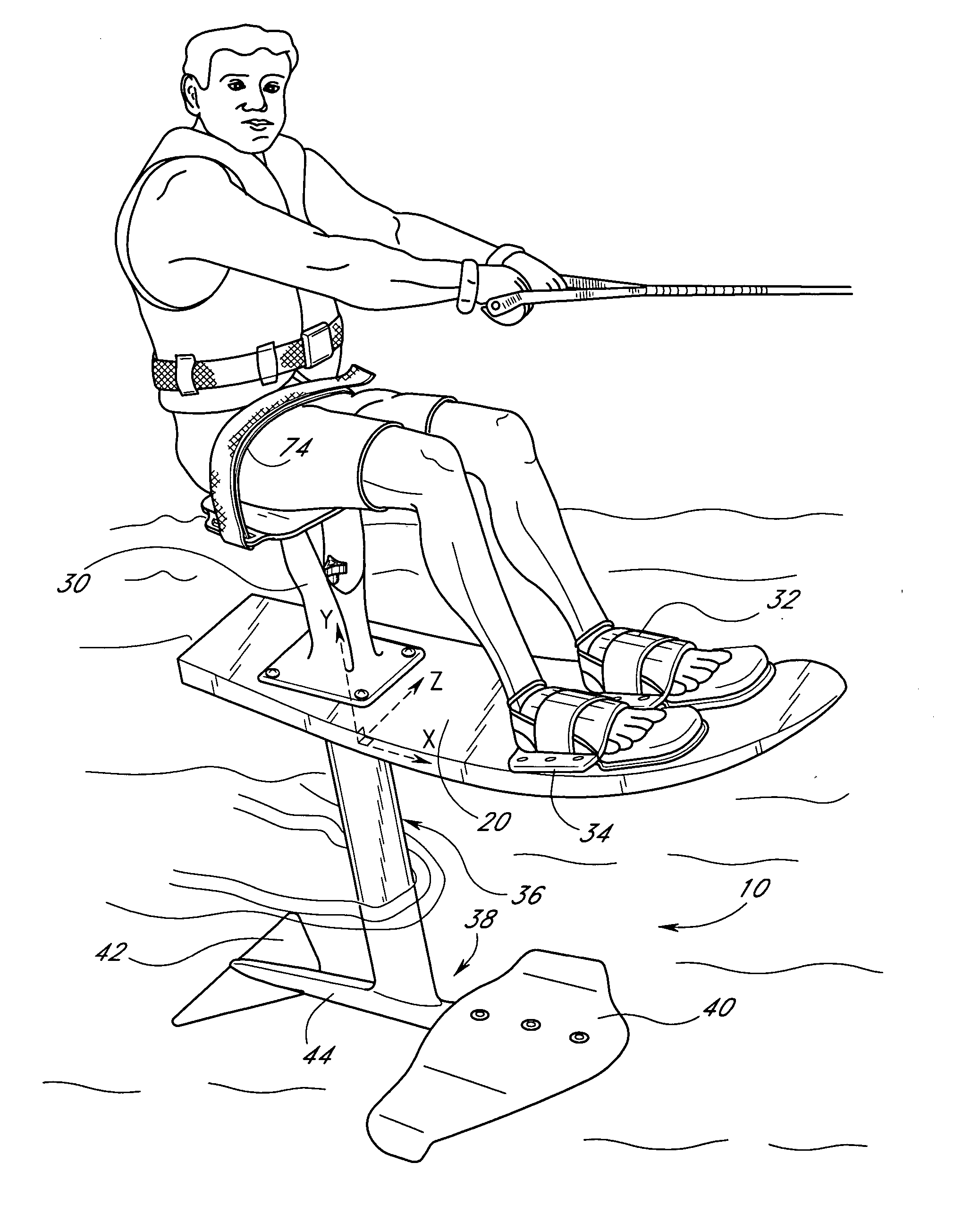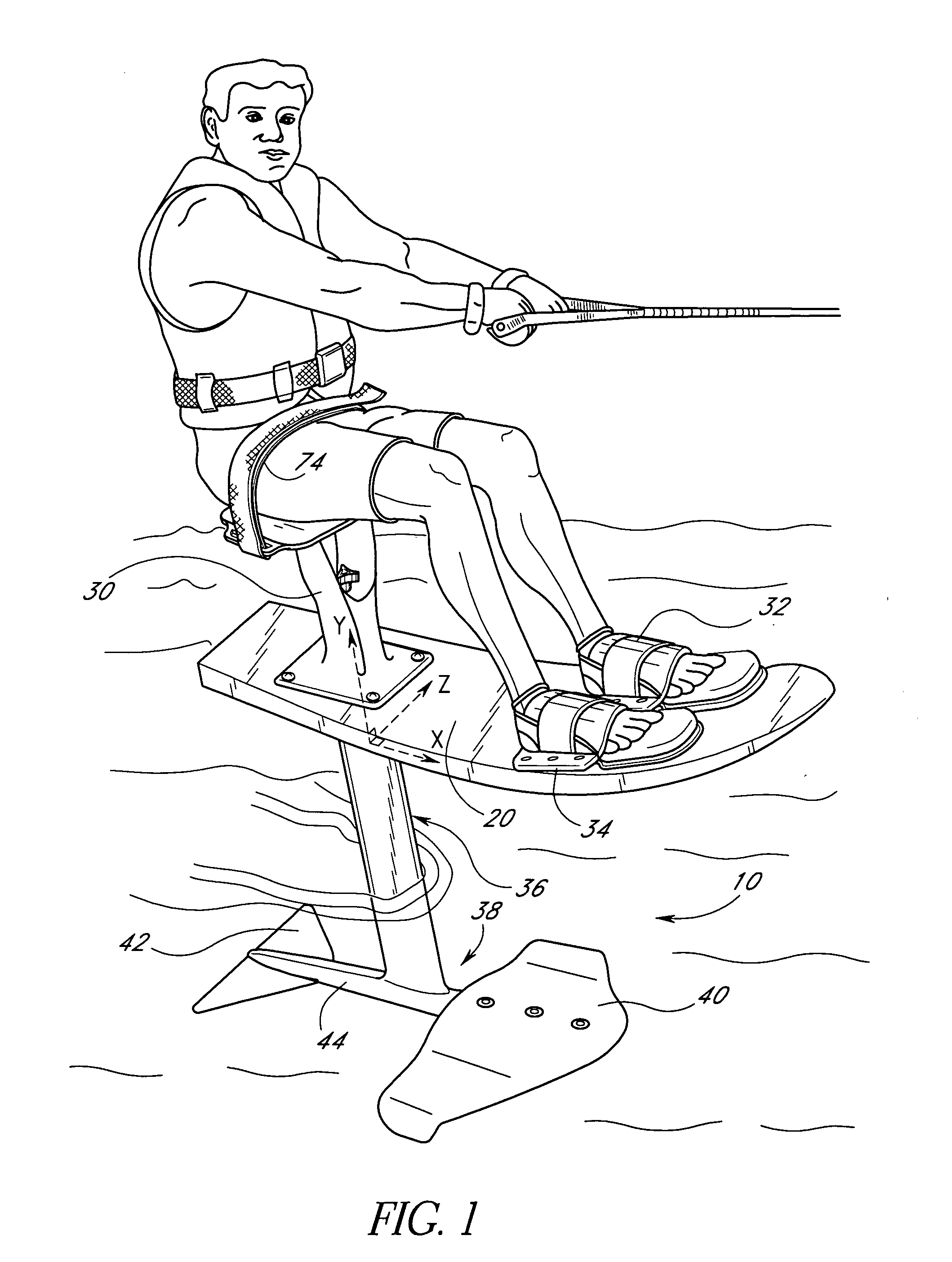Flying ski
a ski and ski technology, applied in the field of flying skis, can solve the problems of insufficient challenge, difficult operation of flying skis, and inability to use skis, and achieve the effects of increasing the friction coefficient between the clamp and the male strap, improving the quality of the ride, and increasing the rider's comfor
- Summary
- Abstract
- Description
- Claims
- Application Information
AI Technical Summary
Benefits of technology
Problems solved by technology
Method used
Image
Examples
Embodiment Construction
[0100] The present embodiments of the improved flying ski are disclosed in the context of the types of flying ski disclosed in U.S. Pat. Nos. 5,100,354 and 5,249,998, each of which are incorporated by reference in their entirety herein. The principles of the present flying ski, however, are not limited to the types of flying ski in those disclosures. Instead, it will be understood by one of skill in the art, in light of the present disclosure, that the improved types of flying ski disclosed herein can also be successfully utilized in connection with other types of flying skis, both presently known and later developed, as well as other recreational water and nonwater devices. One skilled in the art may also find additional applications for the improvements disclosed herein. However, the flying ski described herein is particularly advantageous in connection with the types of flying ski disclosed in the incorporated patents.
[0101] The improved flying ski described herein is especially...
PUM
 Login to View More
Login to View More Abstract
Description
Claims
Application Information
 Login to View More
Login to View More - R&D
- Intellectual Property
- Life Sciences
- Materials
- Tech Scout
- Unparalleled Data Quality
- Higher Quality Content
- 60% Fewer Hallucinations
Browse by: Latest US Patents, China's latest patents, Technical Efficacy Thesaurus, Application Domain, Technology Topic, Popular Technical Reports.
© 2025 PatSnap. All rights reserved.Legal|Privacy policy|Modern Slavery Act Transparency Statement|Sitemap|About US| Contact US: help@patsnap.com



